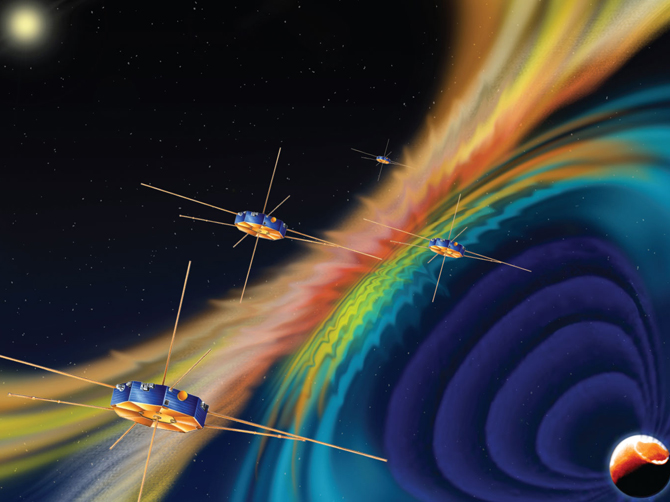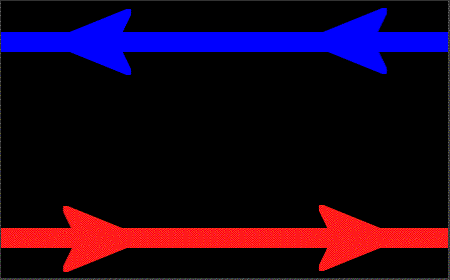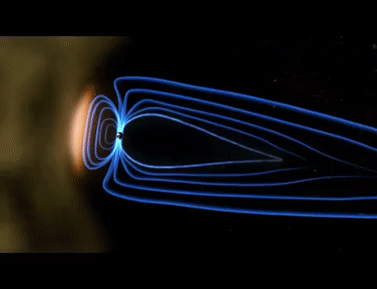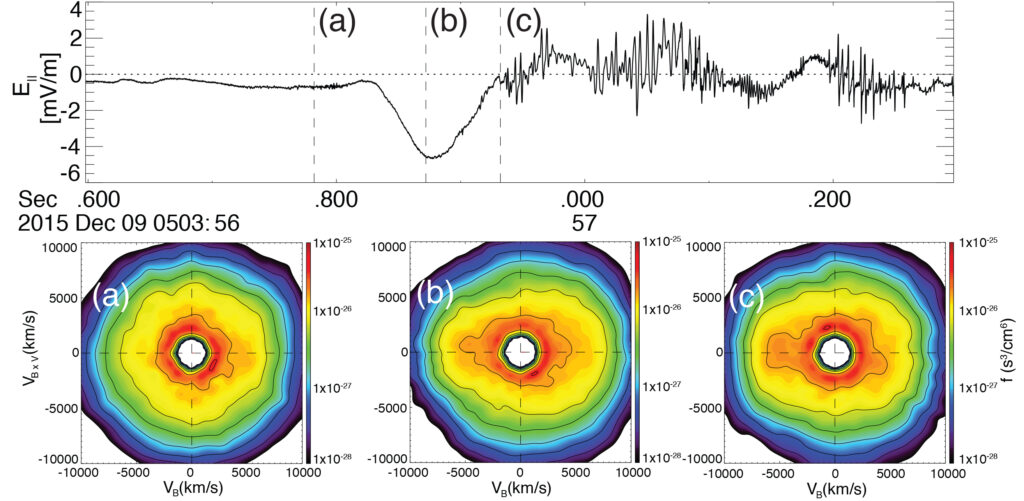MMS Reconnection Science

In 2015, NASA launched the Magnetospheric Multiscale (MMS) mission to study the phenomenon of magnetic reconnection. Magnetic reconnection is a process where plasmas containing near-oppositely oriented magnetic fields collide, leading to a tearing of the magnetic field, jetting of plasma, and the explosive release of energy. Below you’ll find more information on MMS reconnection science.

Magnetic reconnection can drive solar flares, lead to instability in nuclear fusion plasma confinement devices, plasma jets from astrophysical bodies, and couple the solar wind to the earth’s magnetosphere. This can drive space weather activity and enhance the aurora borealis (northern lights) at earth.

MMS has unprecedented data resolution, providing full electron distributions every 30 ms and full ion distributions every 150 ms. It also makes 3-D electric and magnetic field measurements at sampling rates up to 256 kHz. I am involved in analyzing MMS data to help study the reconnection process in detail. My research interests are how electrostatic and electromagnetic waves in plasma can influence magnetic reconnection as well as how reconnection can dissipate the energy found in plasma turbulence.

I am also involved in the MMS Scientist in the Loop (SITL) program. The SITLs are volunteer scientists who look at thumbnails of MMS data for events likely to contain reconnection and other interesting science. They then make selections of events that are high priority to downlink from the satellites. The SITL now even has an AI assistant to help guide their selections. I serve as SITL, help organize the program, and helped write the software that scientists use to make their selections.